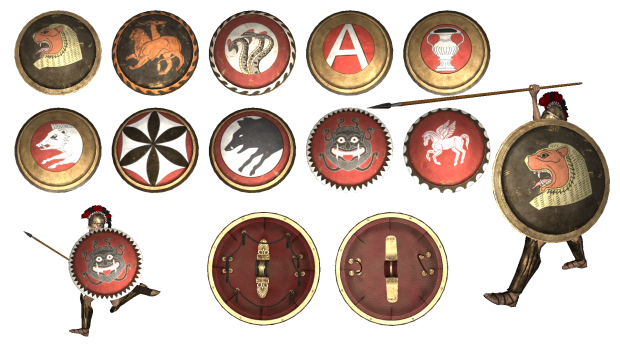Rome at War is a total conversion modification for Mount & Blade: Warband set in 300 B.C., 23 years after the death of Alexander the Great.The mod supports both Single and Multiplayer and requires your Warband version to be at least 1.161+
Etruscan Aspis
(view original)
Post a comment
Description
New models and textures for the Etruscan Aspis.
Models and base textures made by Rgcotl.
Patterns made by Seek n Destroy except for the pegasus which was made by Gothic Knight.
Some of the patterns were based on the Giglioli tombs in Tarquinia, the remaining were based on the color scheme of these patterns and recurring paintings in Etruscan art.







Previous shields for comparison: Tw.greywool.com
(buried)
faake and gay
how is this fake and gay again?
Probably because his life is fake and gay so he assumes everything else is too.
lol dont even remember writing this probably was just being an idiot in no way, shape or form is this Fake Or Gay :D
Holy mother of christ this is so good !!!
Good job!
looking really good
Great work.
i love it!
This comment is currently awaiting admin approval, join now to view.